The term “Secret Society” may conjure thoughts of spies, terrorists, organized crime, phantom power brokers or seniors at Yale (see Skull and Bones). Actually, it stems from a tradition so old scholars have several definition for it. In general it is a group that limits its membership by, say, gender, race, religious affiliation or good old ‘by invitation only.’ The group promises superior status or knowledge to members. Although the existence of the group is not a secret, its procedures, beliefs and practices, perhaps even membership, are.
Archaeologists have found what some consider to be traces of clandestine groups in the prehistoric record. Check on the work of Brian Hayden at Keatley Creek in British Columbia (https://www.sfu.ca/archaeology-old/dept/fac_bio/hayden/curres/keatcr.htm) reported in an article in the July/August 2020 issue of Archaeology magazine.
Closer to our time, one of the oldest and most widespread is the Order of Freemasons who can claim descendancy from the guilds of the artisans who built Europe’s cathedrals in the 14th Century. Worldwide membership estimates range from two to six million at the beginning of the 21st century.
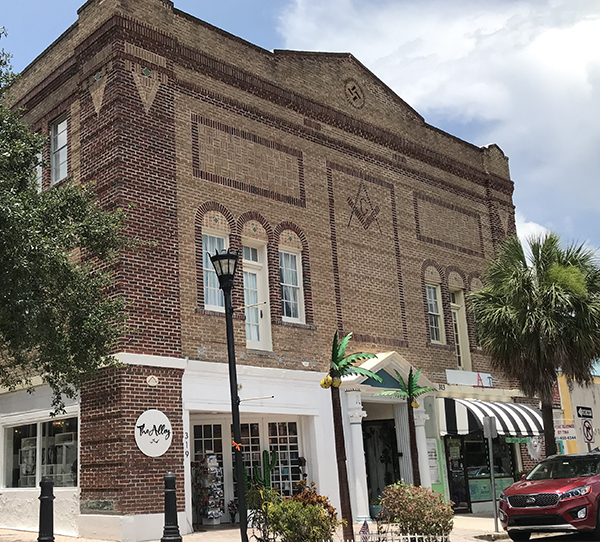
Their symbols on the outside of buildings, such as this display in Cocoa Village, Brevard County, conveniently just down the street from the Library of Florida History, are testimony to the long existence of such groups in Florida.
As Ben DiBiase recounts in his segment in Florida Frontiers Radio episode 386, (https://myfloridahistory.org/frontiers/radio/program/386 ) Freemasonry in Florida dates back to the British period and the 1768 opening of Grant’s East Florida Lodge 142 in St. Augustine. That chapter was tossed out by the Spanish when they regained control of Florida after the Revolutionary War.
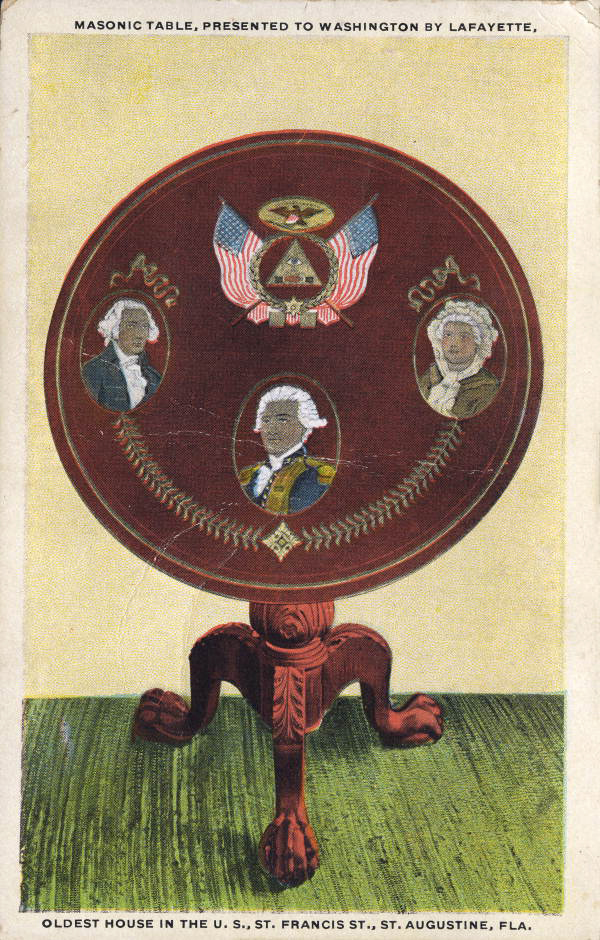
Courtesy Florida Memory
But a reminder that just about everyone who was anyone in that era had ties to Freemasonry remains in the city, as portrayed on this old post card. For the record, there is now a Masonic Lodge 142 in Panama City (https://lodges.glflamason.org/lodge/142).
Masonry returned to Florida with the arrival of the Americans.
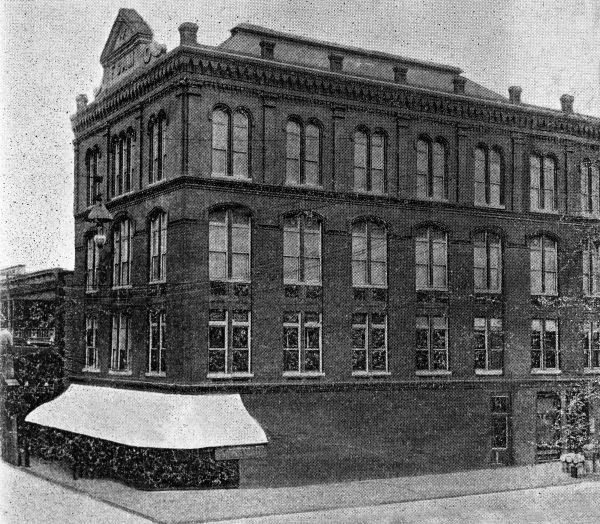
Courtesy Florida Memory
Along with other fraternities they thrived as communities were established and grew, especially in the period after the Civil War and the beginning of the 20th Century, when this picture of the Masonic Temple in Jacksonville was taken.
Another well known fraternal organization with British roots and an extensive presence in Florida is the International Order of Odd Fellows (IOOF).
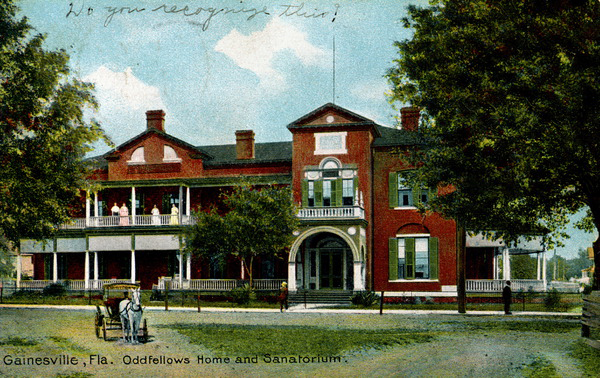
Courtesy Florida Memory
This 1905 post card of the Odd Fellows Home in Gainesville brings us closer to the actual and professed purpose of these organizations: self improvement, aid to the community, friendship and help for those in need. They may have kept their ceremonies, costumes, traditions and business secret from non members, but they were not shy about getting new members.
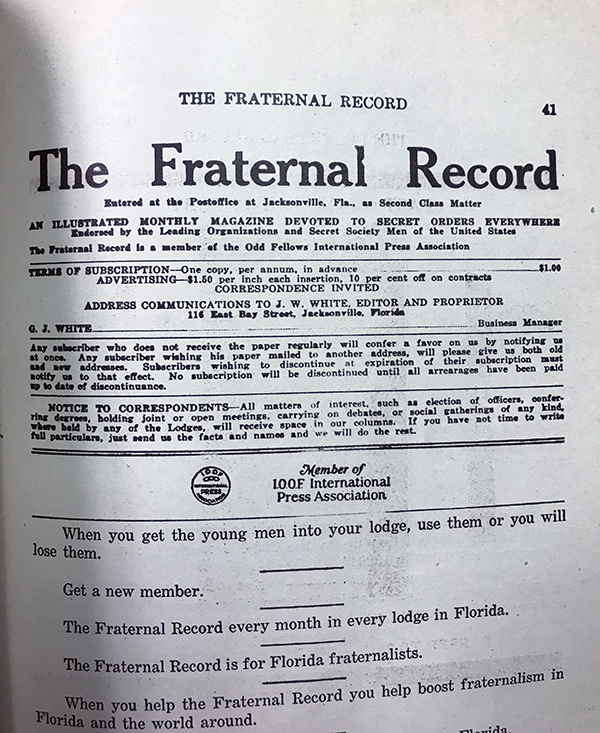
If they were going to be secret, why publish a monthly magazine from 1896 to the mid-1940’s that said, right there on the cover, it was “devoted to the interests of Masonry-Odd Fellowship-Knights of Pythias-Red Men and kindred organizations”?
That message did not change much over the years.
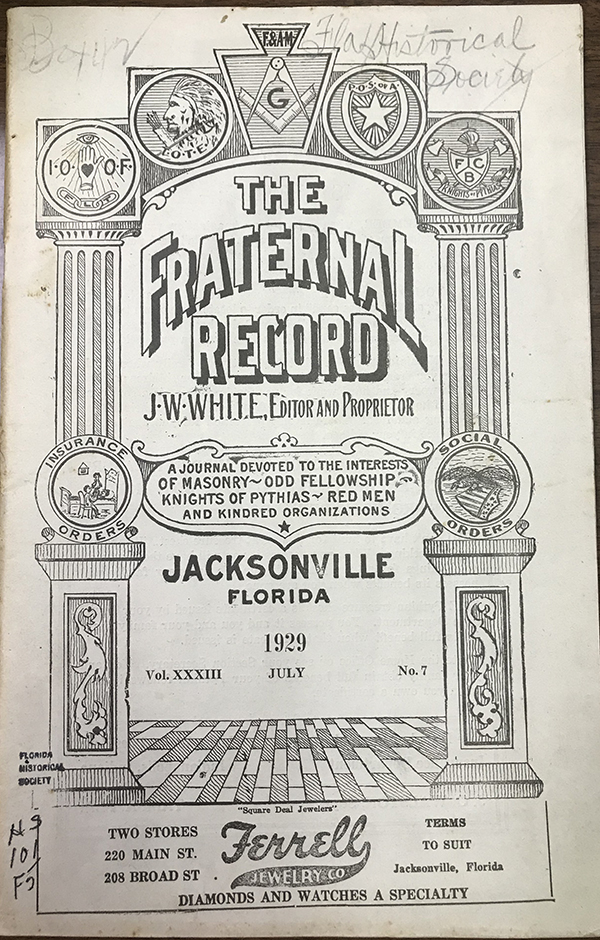
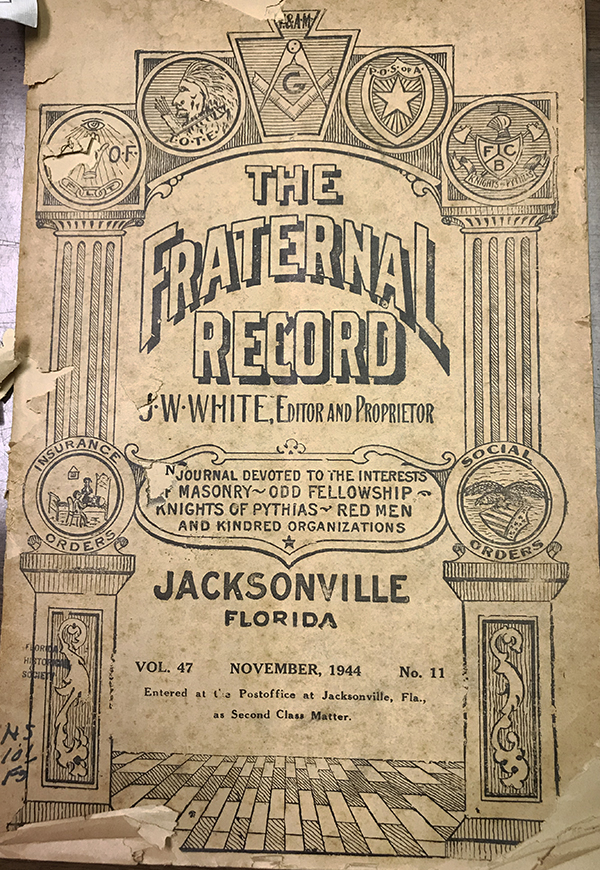
At least not on the part of the publication run found in the archives of the Library of Florida History.
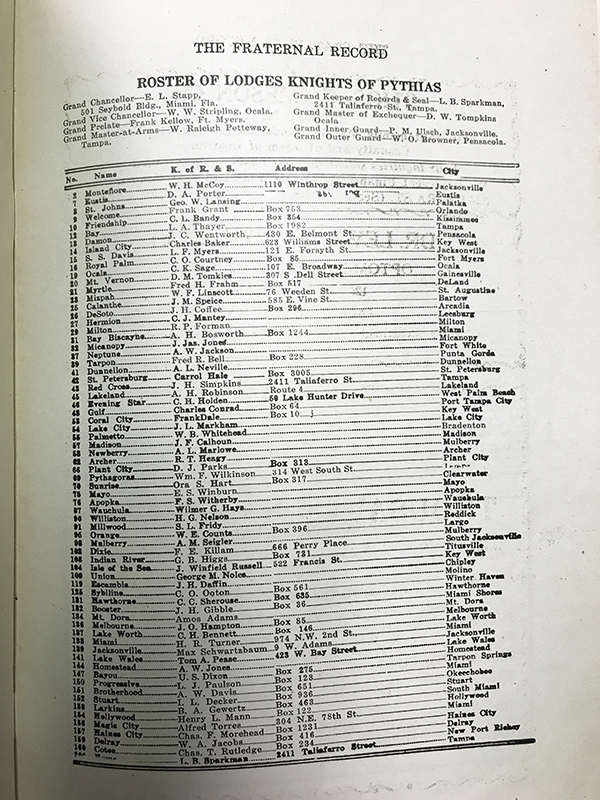
It offered a lot of information on how to find these ‘secret’ organizations all over the state and includes names and contact information for officers and committee heads. This can all be of interest to family historians looking to fill out the lives of Florida residents.
For insights into the mindset of the era, we have the “Red Men”, who decidedly weren’t.
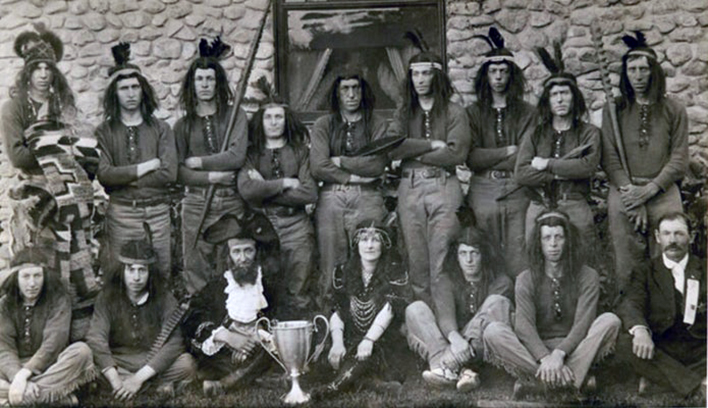
This group out of California, and a description on-line says it all: “The Improved Order of Red Men is a fraternal organization established in North America in 1834. Their rituals and regalia are modeled after those assumed by white men of the era to be used by Native Americans. Despite the name, the order was formed solely by, and for, white men.”
They may not be as well known as the Masons and Odd Fellows, but are still active (http://www.redmen.org/).
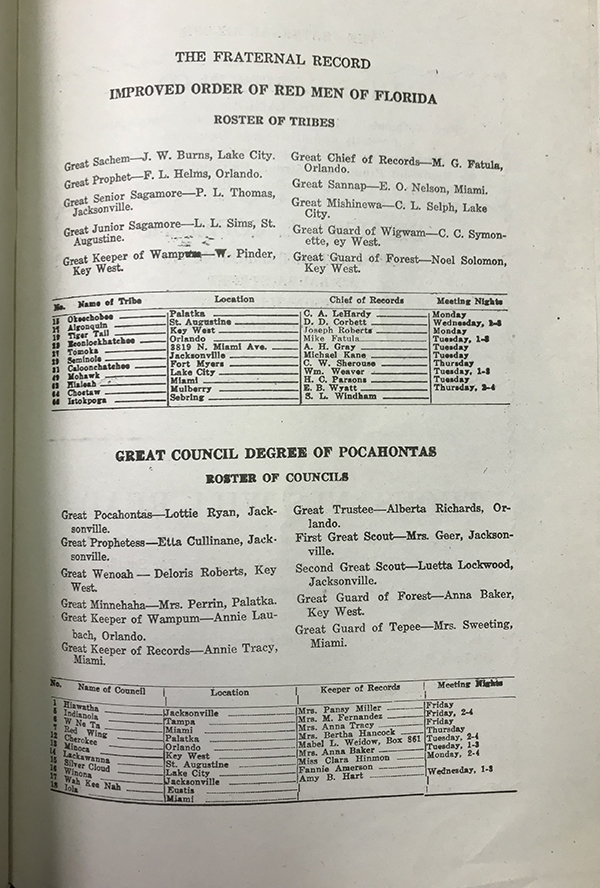
And a look at a page dedicated to the Florida chapters does reveal some ‘progress’ by the mid-20th century, women were allowed to be culturally appropriate, too.
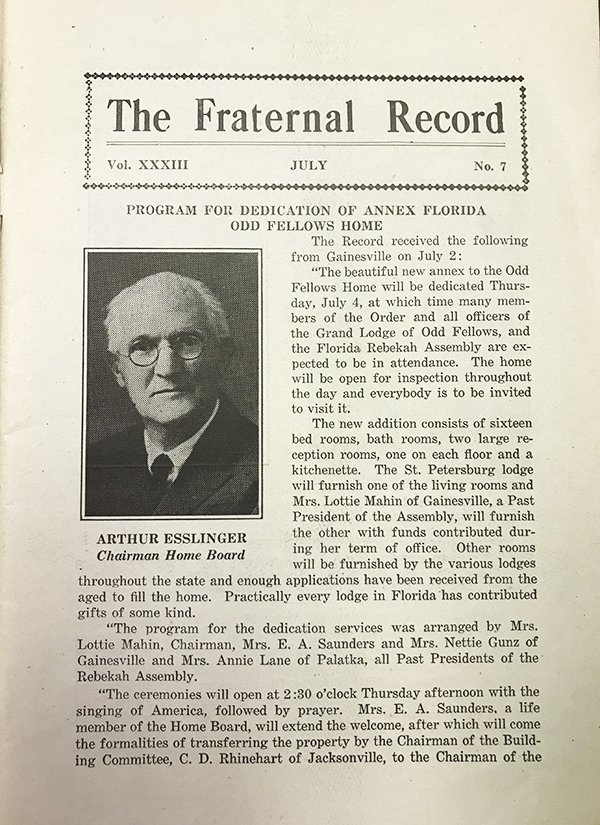
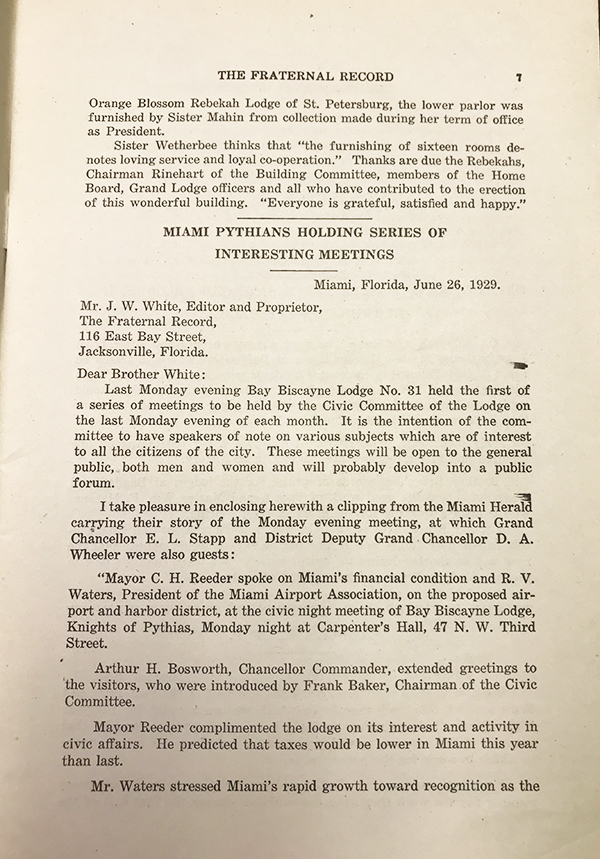
For all the secrecy and rumors of desire for world domination, the Fraternal Record is simply full of the type of detailed stories you would expect from any early 20th century progressive minded civic organization intent on doing good for their community while bolstering the reputation of its active members.







